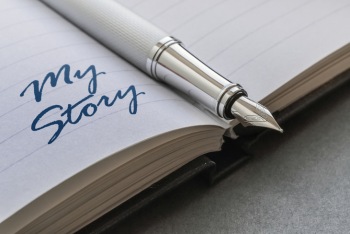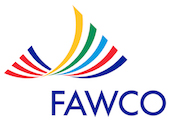by Mary Ellen Brennan, former member of AWC The Hague
 A year and a half after open gallbladder surgery, I developed an incisional hernia.
A year and a half after open gallbladder surgery, I developed an incisional hernia.
Portugal has both a public and a private healthcare system. Residents can purchase private insurance to utilize the private hospitals and doctors, a better option except for emergencies. I saw a surgeon at the local private hospital, who recommended surgery. I received an ultrasound as part of the diagnosis and a CT scan to document it for the insurance company.
Scheduling occurred quickly, only delayed by my surgeon having surgery himself.
Pre-Surgery
I had a pre-operative appointment that included lab work, chest x-ray, ECG, and a lengthy meeting with an anesthesia nurse. I had to purchase medical disinfecting wipes and was given instructions for how to shower and use them the evening before and morning of the surgery.
Surgery
I was told to report to the hospital on the morning of the surgery around 8:30 am. I asked repeatedly what time my surgery would be and was told the doctor will decide on that day when to call each patient for surgery.
My request for a private room had been granted, and I was taken to the room to prepare for surgery. After undressing and putting on compression hose, the nurse inserted an IV quickly and easily. I noticed the nurse didn’t connect the IV port to the IV fluids. She said it was to give me more freedom until my surgery, which was scheduled for 6 pm! I thought perhaps her translation of the time was incorrect. As many expats here do, I have a concierge service to help manage my medical care. I immediately called them, and they spoke to the nurse, confirming 6 pm. I could not believe I had to show up 10 hours in advance, fast all day, and sit around in a hospital gown. I had myself a good cry and wished I had not left the Netherlands.
Since the wait was going to be so long, and I had forgotten to bring the surgical compression belt that I wanted to use after surgery, I sent my friend back to get it. There wasn’t a surgical waiting room or a process for giving family and friends information after the surgery.
At a bit past noon, two nurses came to take me for surgery. I barely had time to lock up my things and take one last bathroom break.
I went to a combined pre- and post-surgery unit. My IV fluids were connected, and I was given pre-surgery antibiotics. Then I had to wait, and waiting in such a place was difficult. I couldn’t see much without my glasses, but I could hear what was going on as patients were being awakened from anesthesia. I realized I understood more Portuguese vocabulary than I thought. I kept reminding myself that I had come out of anesthesia from my previous surgeries with no memory of any of the things I was hearing around me. Finally, I was taken into the operating room and got myself on the operating table. Everyone spoke English to me. I was quickly put to sleep through the IV.
Post-Surgery
I remember awakening in the same combined unit. The nurses from the ward came and returned me to my room quickly. I asked for some water or ice, and they said I couldn’t have either or walk for four hours after anesthesia. This seemed a bit odd. I decided to look at my abdomen and saw four rather than the three bandaged holes my surgeon had told me to expect. I began to think something more had happened.
After four hours, they got me up to walk to the door and back. I was dizzy, but I wanted badly to achieve that milestone and get something to drink.
Finally, the surgeon stopped by and told me the surgery had been more involved than planned. He fixed three adhesions of the small intestine and found that the hernia was 10 cm long with a 5 cm gap. He had to repair it with stitches in addition to mesh.
Hospital
I had a clean, quiet, and comfortable private room and bathroom.
Nursing Care
The nursing care was kind and competent, but each new nurse seemed to contradict the previous one and wanted to do things her way. Nurses spoke English, as did doctors, but most other patient care staff did not.
Pain Relief
Intravenous pain and other medications were plentiful. I was sent home with pain medication to use for a week before transitioning to paracetamol. A catheter was placed in the operating room, and not having to get to the bathroom while recovering kept me more comfortable.
Food
I was placed on a modified diet because of the intestinal adhesions. Four hours after surgery, I was given water and a cup of hot tea. When I asked for more, after a few hours, I was allowed to have a light diet of pureed vegetable soup, jello and applesauce. I remained on the light diet through breakfast the next day and then moved to a high fiber diet at lunch. Generally, the food was pretty awful.
Cost
Under my private insurance, I had a €500 co-pay for the hospital and surgery, about €100 for the pre-surgical visit, and €22 for each doctor’s visit. The total cost of the surgery increased from approximately €2000 to €3000 because it was more extensive, but I was not charged more.
Read about my first European surgery experience in the Netherlands.
